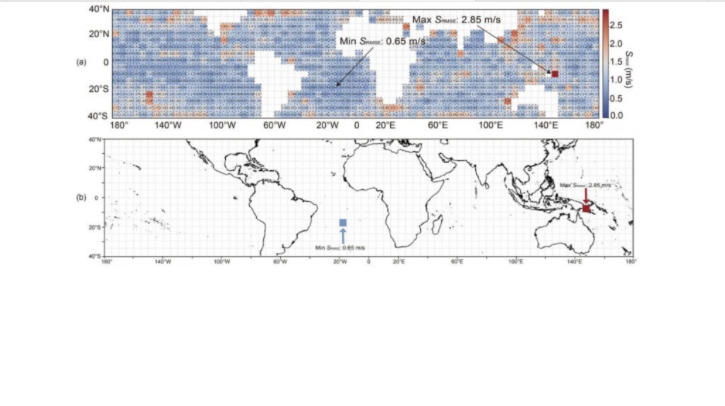Researchers from Nanjing Tech University and the Chinese Academy of Sciences have introduced a model called CNN-SENet, designed to deliver more accurate and computationally efficient wind speed retrievals across global oceans. The study has been published in Satellite Navigation.
Developing CNN-SENet
Trained on more than one million data points from NASA’s CYGNSS satellite and ERA5 reanalysis datasets, the CNN-SENet model blends convolutional neural networks (CNNs) with the squeeze-and-excitation network (SENet) attention mechanism to enhance feature extraction from GNSS-R Delay Doppler Maps.
CNN-SENet elevates traditional CNN architecture by embedding SENet modules between convolutional layers. These attention modules dynamically emphasize the most informative parts of the input, enabling the model to learn more effectively while cutting training iterations. The model was tested across a broad dataset compiled from CYGNSS satellite observations and ERA5 reanalysis wind speeds, spanning wind conditions from calm seas to 40m/s gales.
Research results
CNN-SENet achieved a root mean square error (RMSE) of 1.29 m/s and an R² of 62.4%, outperforming the standard CNN (RMSE: 1.43 m/s) and the widely used geophysical model function (GMF) method (RMSE: 1.91 m/s). Even under high wind conditions, where retrieval is most difficult, CNN-SENet maintained superior performance, with an RMSE of just 3.01 m/s – substantially lower than its counterparts.
The model also showed faster training efficiency, completing its learning in half the time of standard CNNs across various hardware configurations. Spatially, it performed best over open ocean regions, with 82% of analyzed areas achieving RMSE below 1.5m/s. Temporal tests across different months confirmed the model’s consistency, indicating robust generalization over time. Together, these results highlight CNN-SENet as a promising tool for global, high-resolution ocean wind monitoring.
Real-world applications
“Our aim was to create a smarter, faster model that can adapt to real-world variability in ocean environments,” said Dr Dongliang Guan, co-author of the study.
“By integrating SENet into the CNN framework, we’ve empowered the system to focus on what matters most – improving both efficiency and accuracy. This is especially critical for monitoring extreme weather systems like typhoons, where every minute counts.”
The researchers believe this advancement will contribute significantly to building more agile, data-driven marine forecasting networks.
The team also states that the practical implications of CNN-SENet extend far beyond academic performance. The researchers assert that its lightweight design and computational efficiency make it ideal for deployment on microsatellite constellations, offering the potential for near real-time global wind field monitoring.
In related news, the UK’s National Oceanography Centre (NOC) recently delivered a roadmap to guide how scientists observe the ocean to increase their understanding of the potential impacts of expanding offshore wind developments on the marine environment. Read the full story here



